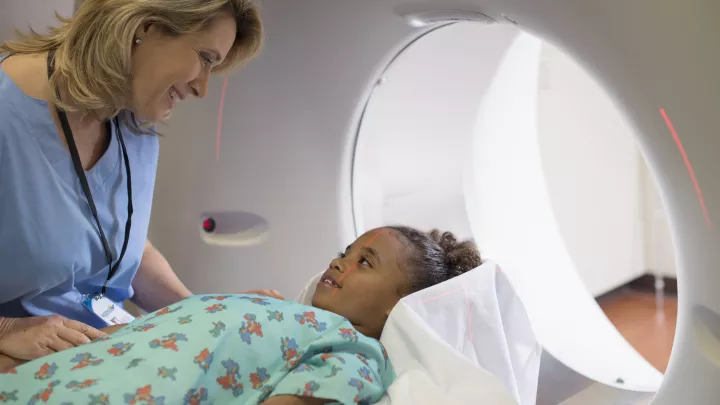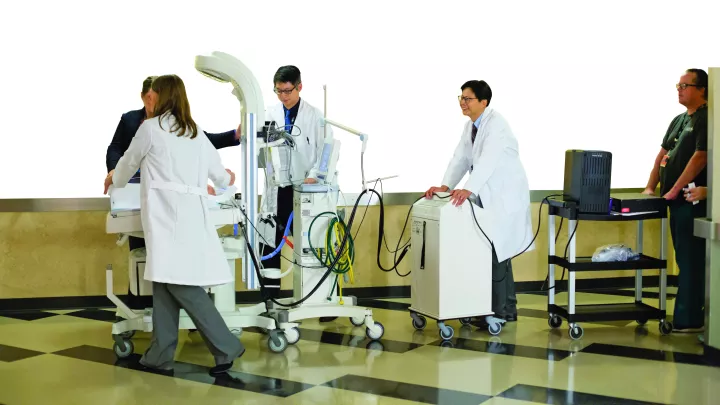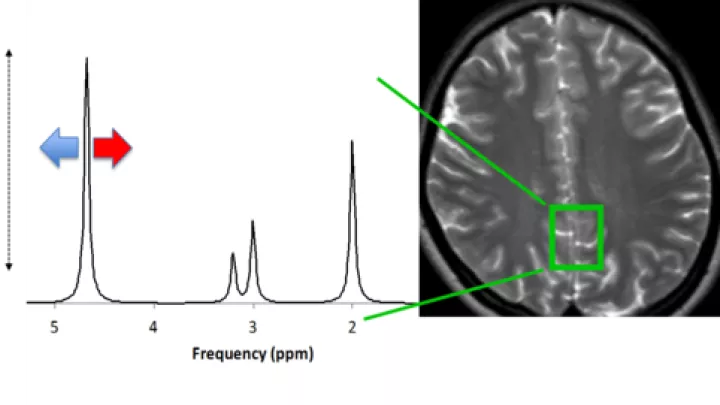
Stefan Bluml, PhD
Pediatric brain tumors are the second most frequent malignancy of childhood, exceeded only by leukemia and are the leading cause of death from cancer in pediatric oncology. Dr. Blüml studies the metabolism of these tumors in vivo with the goals of better initial diagnoses and characterization, to predict outcomes, and to identify early predictors of the effectiveness of therapies.
Newborn brain development: After birth there are monumental developmental changes of the brain whereby helpless infants transform into children and adults capable of the complex cognitive and behavioral processes necessary to function independently in modern society. Particularly critical is early brain development the time during which multiple neurocognitive disorders emerge. At the core, the marked behavioral changes between infancy and adolescence reflect structural maturational changes (e.g., axonal outgrowth, dendritic arborization, myelination, gliogenesis, angiogenesis) and functional maturational changes (e.g., Hebbian learning processes). Dr. Blüml and his collaborators use non-invasive imaging methods to study complex metabolic processes that accompany brain maturation with the goals to establish normal biochemical maturation of the human brain as well as to better characterize abnormal development at a microscopic level.
Publications
PUBLICATIONS
- Wisnowski J, L, Bluml S, Lisa P, Zelinski E, Nelson M, D, Painter MJ, Damasio H, Gilles F, H, Panigrahy A. 2013. Altered Glutamatergic Metabolism Associated with Punctate White Matter Lesions In Preterm Infants. PLOS ONE 8(2): e56880.doi: 10.1371/journal.pone.0056880.
- Blüml S, Wisnowski JL, Nelson MD, Paquette L, Gilles FH, Kinney HC, Panigrahy A. 2012. Metabolic Maturation of the Human Brain From Birth Through Adolescence: Insights From In Vivo Magnetic Resonance Spectroscopy. Cereb Cortex.
- Borzage M, Blüml S, Seri I. 2012. Equations to describe brain size across the continuum of human lifespan. Brain Struct Funct.
- Panigrahy A, Wisnowski JL, Furtado A, Lepore N, Paquette L, Bluml S. 2012. Neuroimaging biomarkers of preterm brain injury: toward developing the preterm connectome. Pediatr Radiol 42 Suppl 1:S33-61.
- Lin A, Tran T, Bluml S, Merugumala S, Liao HJ, Ross BD. 2012. Guidelines for acquiring and reporting clinical neurospectroscopy. Semin Neurol 32:432-453.
Research

Research Overview
Pediatric brain tumors are the second most frequent malignancy of childhood, exceeded only by leukemia and are the leading cause of death from cancer in pediatric oncology. Dr. Blüml studies the metabolism of these tumors in vivo with the goals of better initial diagnoses and characterization, to predict outcomes, and to identify early predictors of the effectiveness of therapies.
Newborn brain development: After birth there are monumental developmental changes of the brain whereby helpless infants transform into children and adults capable of the complex cognitive and behavioral processes necessary to function independently in modern society. Particularly critical is early brain development the time during which multiple neurocognitive disorders emerge. At the core, the marked behavioral changes between infancy and adolescence reflect structural maturational changes (e.g., axonal outgrowth, dendritic arborization, myelination, gliogenesis, angiogenesis) and functional maturational changes (e.g., Hebbian learning processes). Dr. Blüml and his collaborators use non-invasive imaging methods to study complex metabolic processes that accompany brain maturation with the goals to establish normal biochemical maturation of the human brain as well as to better characterize abnormal development at a microscopic level.
Key Findings
- Fully functional MR-compatible incubator: A fully functional MR-compatible incubator with temperature and humidity control is used for the first time at Children's Hospital Los Angeles. This device allows bringing fragile newborns to the MR suit for imaging studies. Bluml S et al. 2004. Radiology 231:594-601.
- Metabolic profiles of common pediatric brain tumors: The metabolic profiles that are described in this publication allow clinicians to more accurately diagnose tumor types. Panigrahy A et al 2006. AJNR 27:560-572.
- Citrate – a predictor for malignant progression of low-grade astrocytoma: For clinicians there are no criteria that would allow them to predict which low-grade (WHO II) astrocytoma eventually progresses to a higher-grade lesion. The presence of citrate, measured in vivo by non-invasive MR, predicts poor clinical course at initial presentation. This information can be used to adjust therapies and management at an early stage. Blüml S et al. 2011. Neuro Oncol.
- Metabolic maturation of the human brain: This is the first report of normal maturational metabolic changes in the human brain from birth to adolescence using the methodology. These are important reference data for future studies of abnormal brain development. Blüml S et al. 2012. Cereb Cortex.
Funding
- Rudi Schulte Research Institute, Santa Barbara. Advancing non-invasive imaging of pediatric brain diseases
- NIH/NINDS via University of Pittsburgh, Subaward 0016682 (116284-1) 7K23NS06337102. Advanced MR Imaging of Perinatal White Matter Injury
- Ian’s Friends Foundation. In vivo spectroscopy of low-grade gliomas in pediatrics
- Rudi Schulte Research Institute, Santa Barbara. Metabolism of human brain tumor models in small animals
- Provide a link to the NIH reporter
Resources
- MR Spectroscopy of Pediatric Brain Disorders, Blüml, Stefan; Panigrahy, Ashok (Eds.), 2012 (Radiology Text)
Media
Protecting Newborn Brains From Hypoxic-Ischemic Encephalopathy Using Hypothermia
Science Daily- Pediatric brain tumors can be classified noninvasively at diagnosis
Fox- Preemies Show Subtle Differences in Brain Development
ResearCHLA Blog:
What does brain development have in common with a dance performance?


